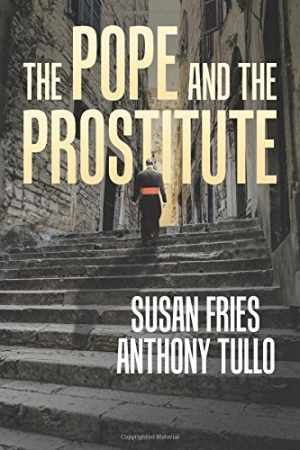The Pope and the Prostitute
A moving historical novel, The Pope and the Prostitute ably captures postwar childhood concerns through its engaging scenes.
Susan Fries and Anthony Tullo’s emotional novel The Pope and the Prostitute follows two extraordinary siblings in the aftermath of World War II as they struggle to hold onto their dreams.
In the twenty years since the war ravaged her family, leaving her and her brother in an orphanage, Charley has come a long way. She was an angry little girl with nothing; now, she is a shrewd and seductive businesswoman. Her long-lost brother, Peter, is living a completely different life, moving up through the ranks of the Catholic Church.
Charley fears that she is going crazy as the past intrudes on her consciousness. Peter, now a cardinal, is caught in the middle of a shocking scandal. While tragedy threatens to overshadow both of their lives, the question of whether they will ever reunite looms.
The first half of the book is Charley’s; her perspective is intriguing and her memories are haunting. Then the narrative seamlessly shifts over to Peter, covering his adoptive life in Italy, where he deals with his sorrow by focusing on his studies and through spirituality. A minor character’s viewpoint is also included; that transition doesn’t occur as smoothly and feels contrived.
Charley and Peter’s childhood is vividly portrayed, especially their time at the orphanage, St. Agnes. Flashbacks illuminate how their time there influenced and shaped them, including when feisty Charlotte was called Charley for the first time.
Action scenes are intense and evocative, including a terrifying Nazi chase after three siblings that moves through the streets just outside of St. Agnes. Peter’s fast thinking and faith during the dire situation foreshadow his future career path in the Church.
Dialogue between the children sparkles; each child has a unique and authentic voice. The other orphans are also distinctively rendered, including Harry, a beefy, artistic boy who makes Peter feel safe. The orphanage’s mother superior is an appealing addition; even Charley takes a liking to the compassionate and surprisingly candid nun.
The book’s grammatical errors are distracting. In some scenes, visual details are foregone, making content feel summarized and distant. Particular structural elements, like a subheading in the middle of a chapter, are disruptive to the flow of the story. Repeated words and phrases dull the narrative.
A surprising turn of events leads to a dramatic and satisfying ending. A moving historical novel, The Pope and the Prostitute ably captures postwar childhood concerns through its engaging scenes.
Reviewed by
Brittney Decker
Disclosure: This article is not an endorsement, but a review. The publisher of this book provided free copies of the book and paid a small fee to have their book reviewed by a professional reviewer. Foreword Reviews and Clarion Reviews make no guarantee that the publisher will receive a positive review. Foreword Magazine, Inc. is disclosing this in accordance with the Federal Trade Commission’s 16 CFR, Part 255.

